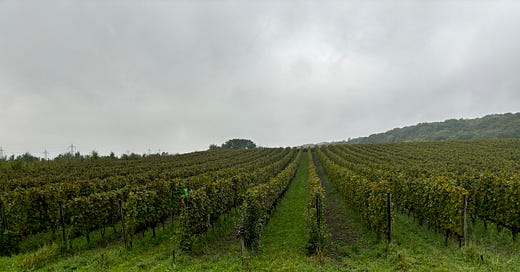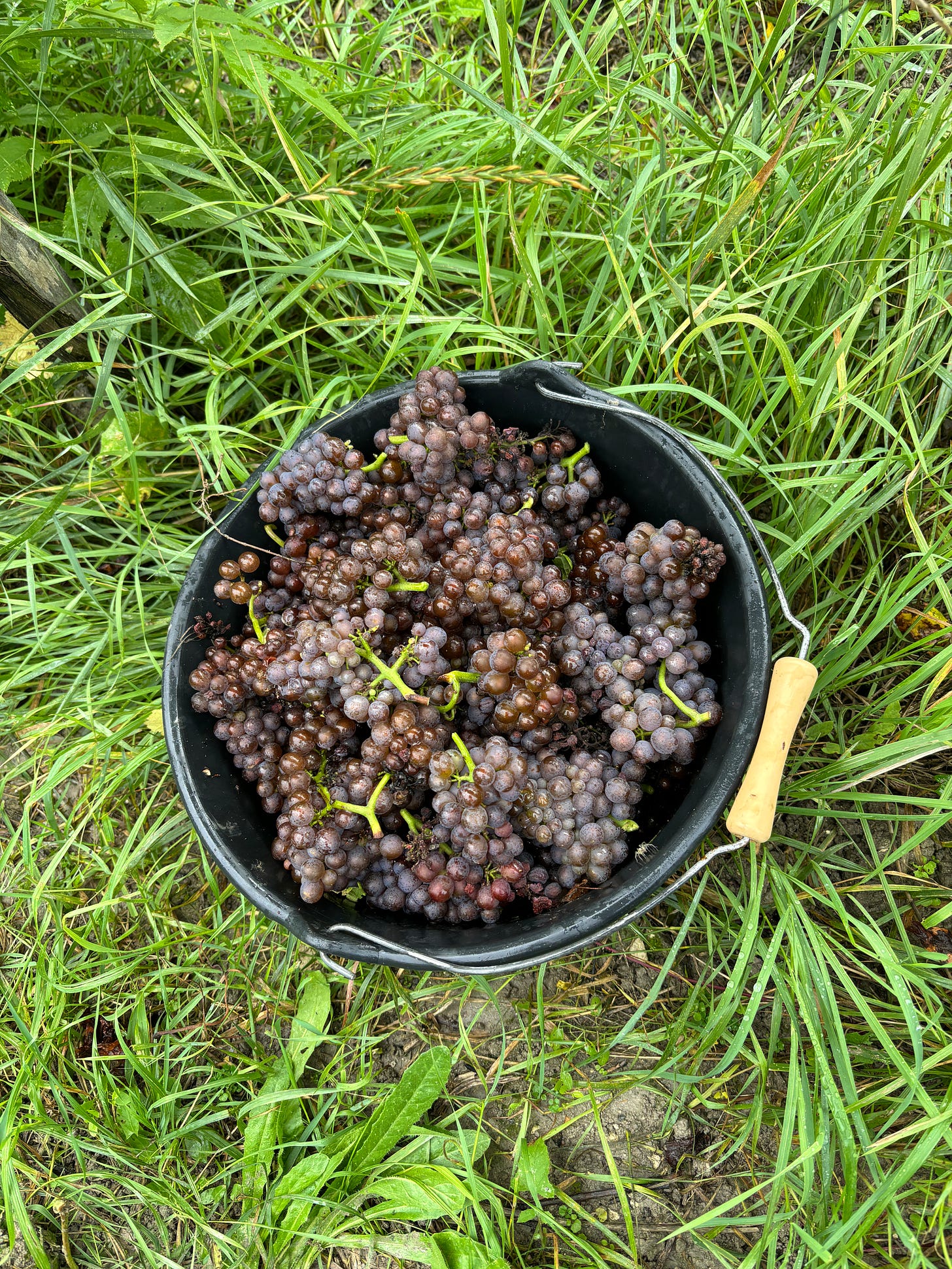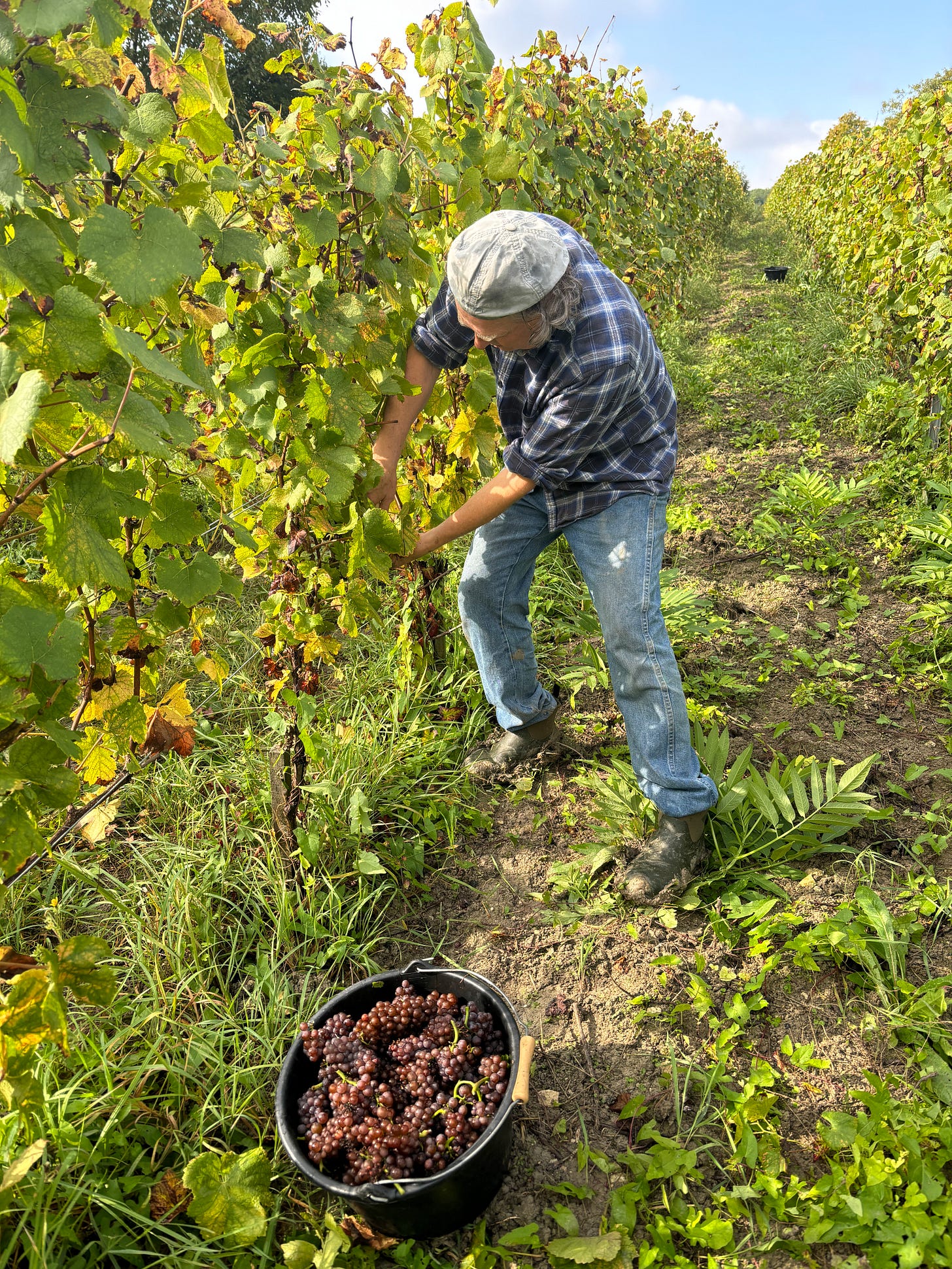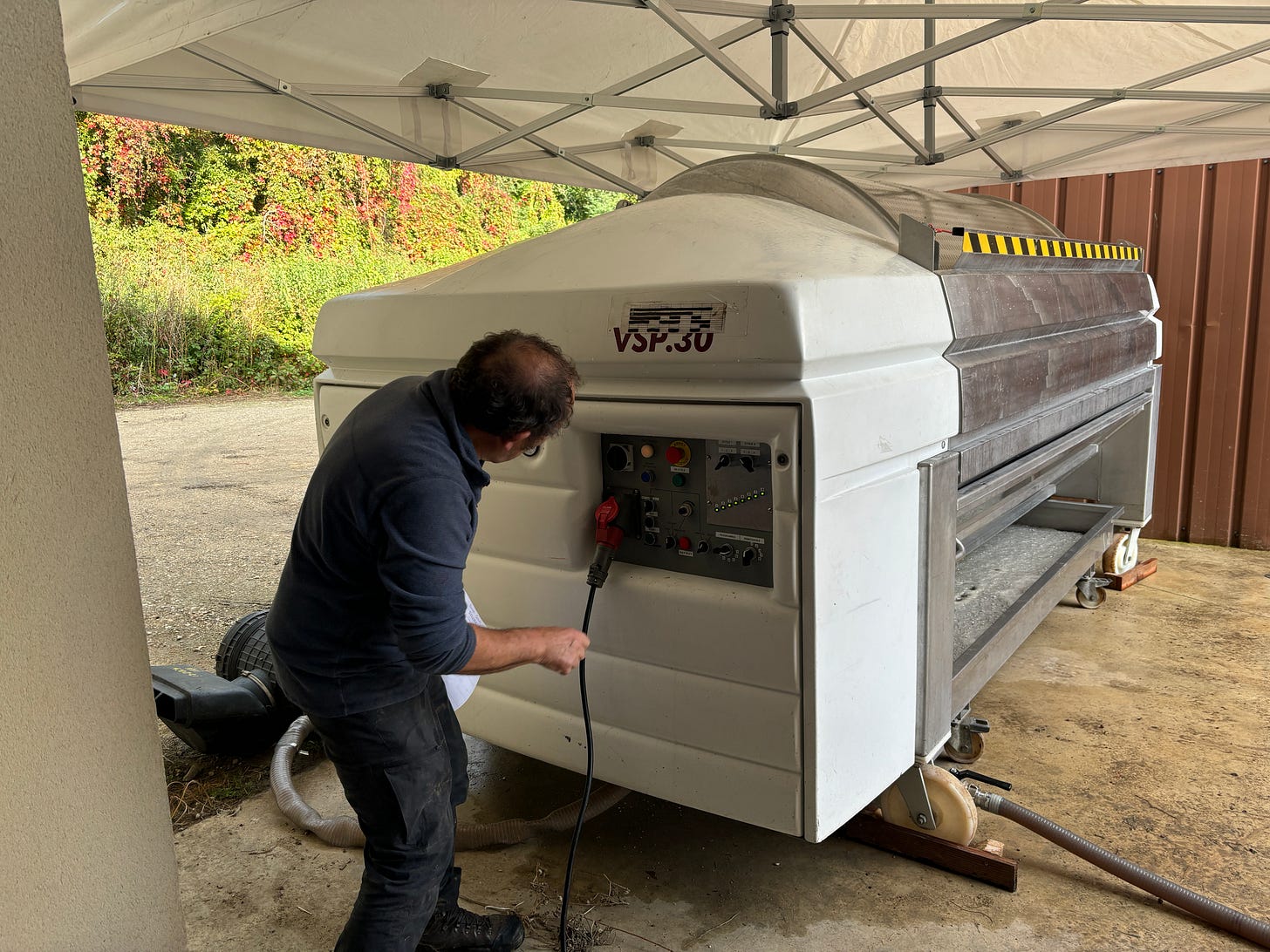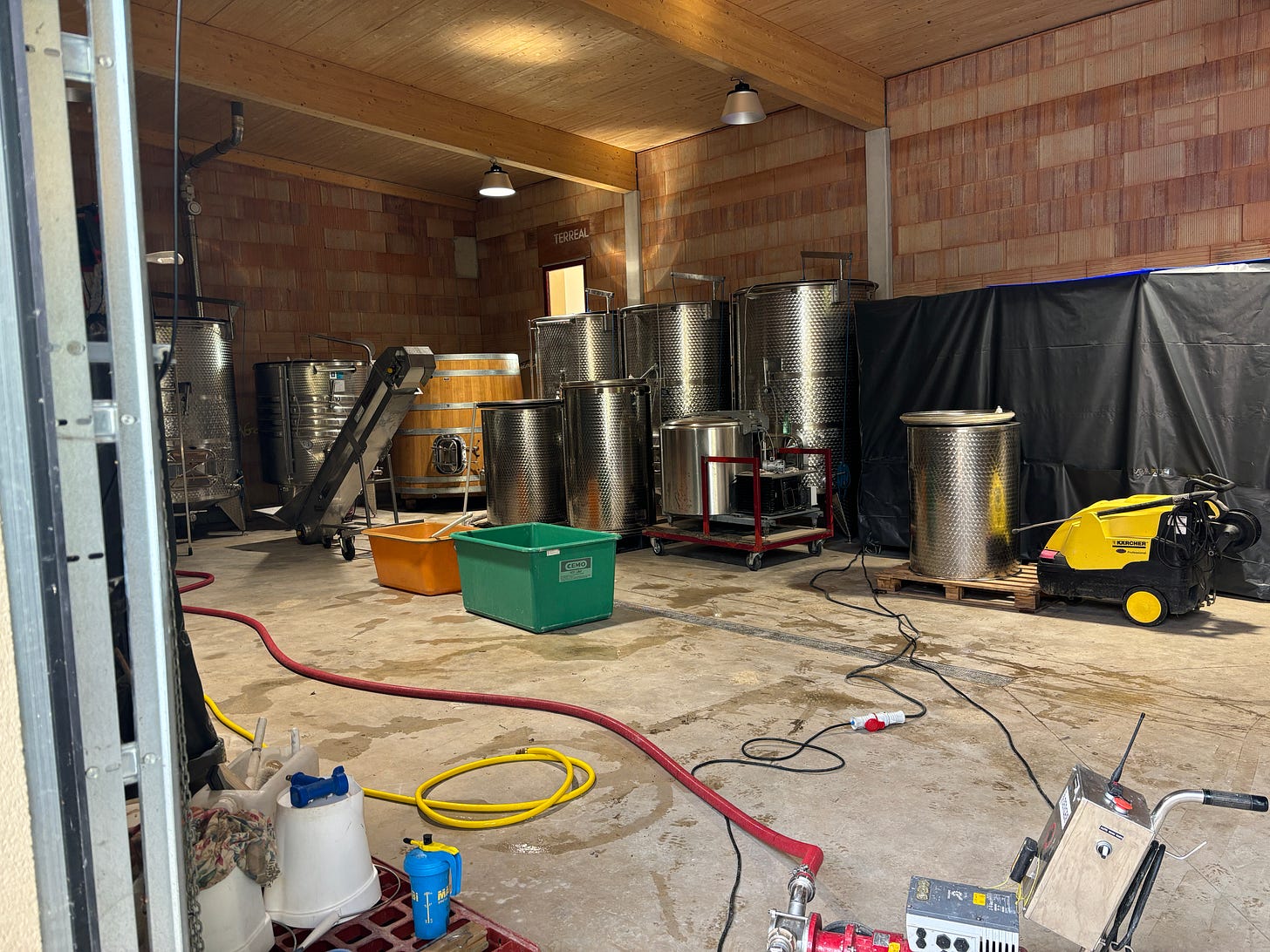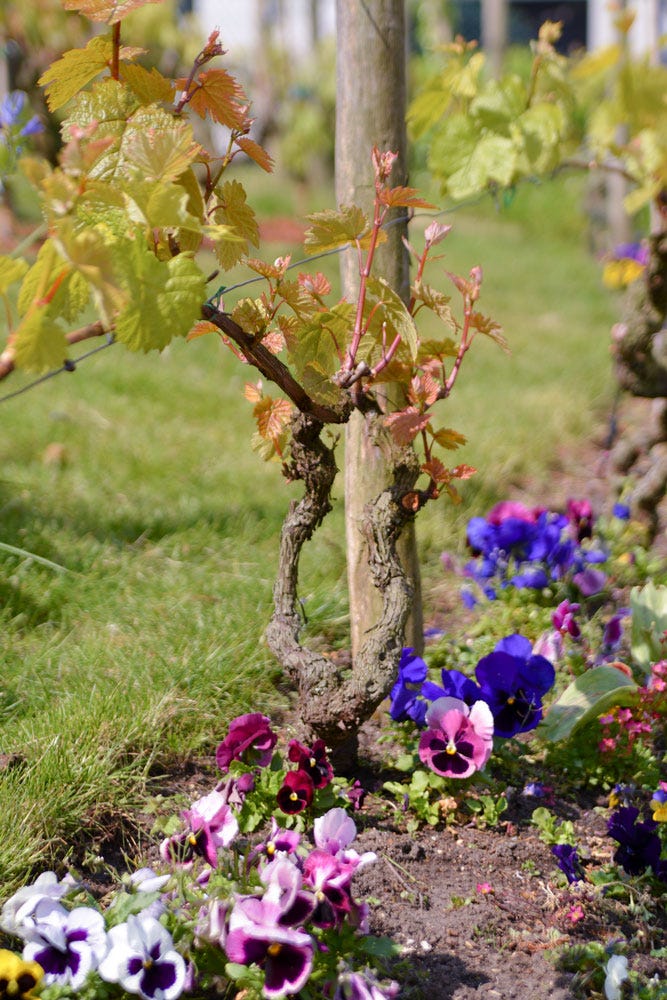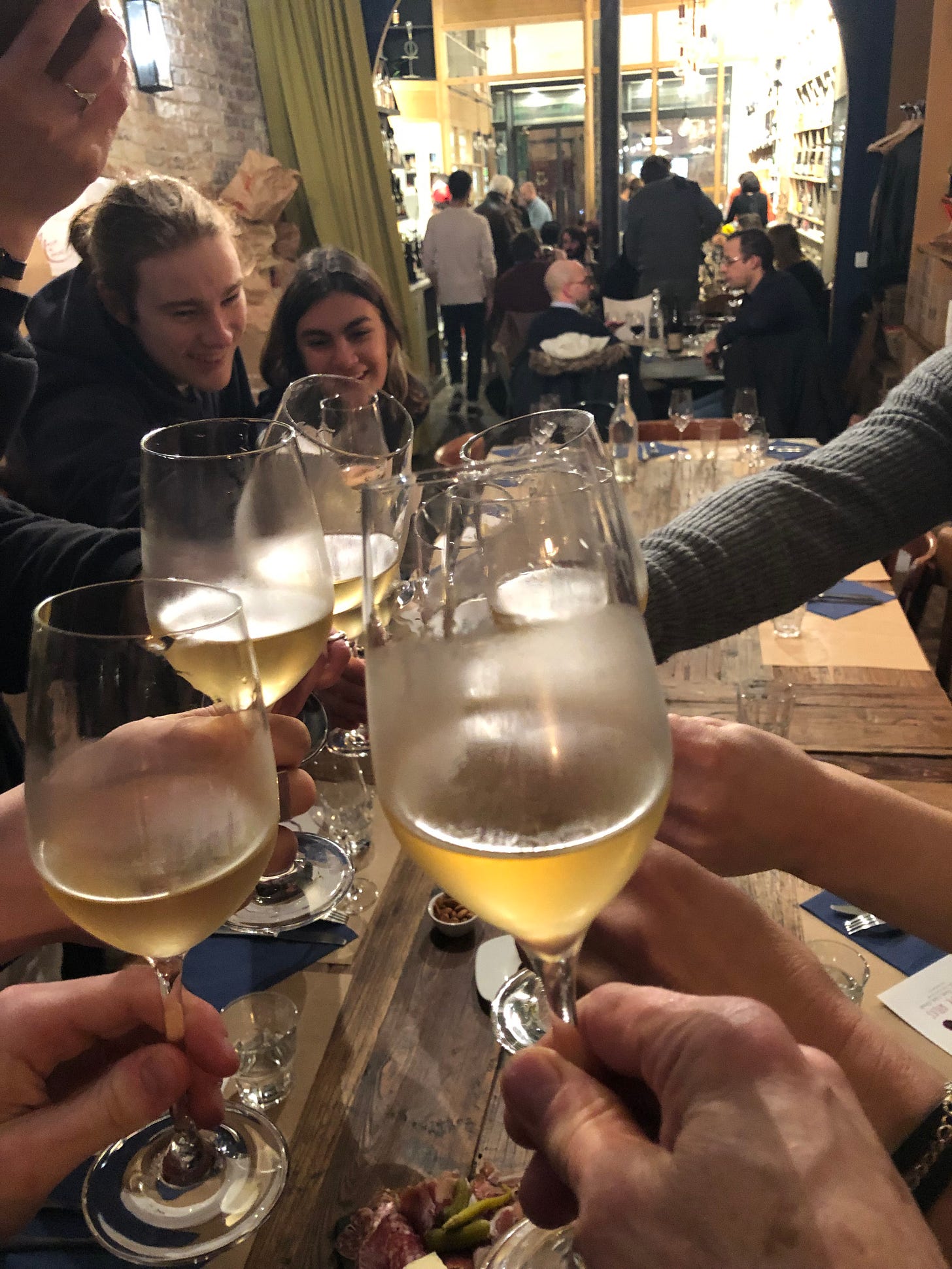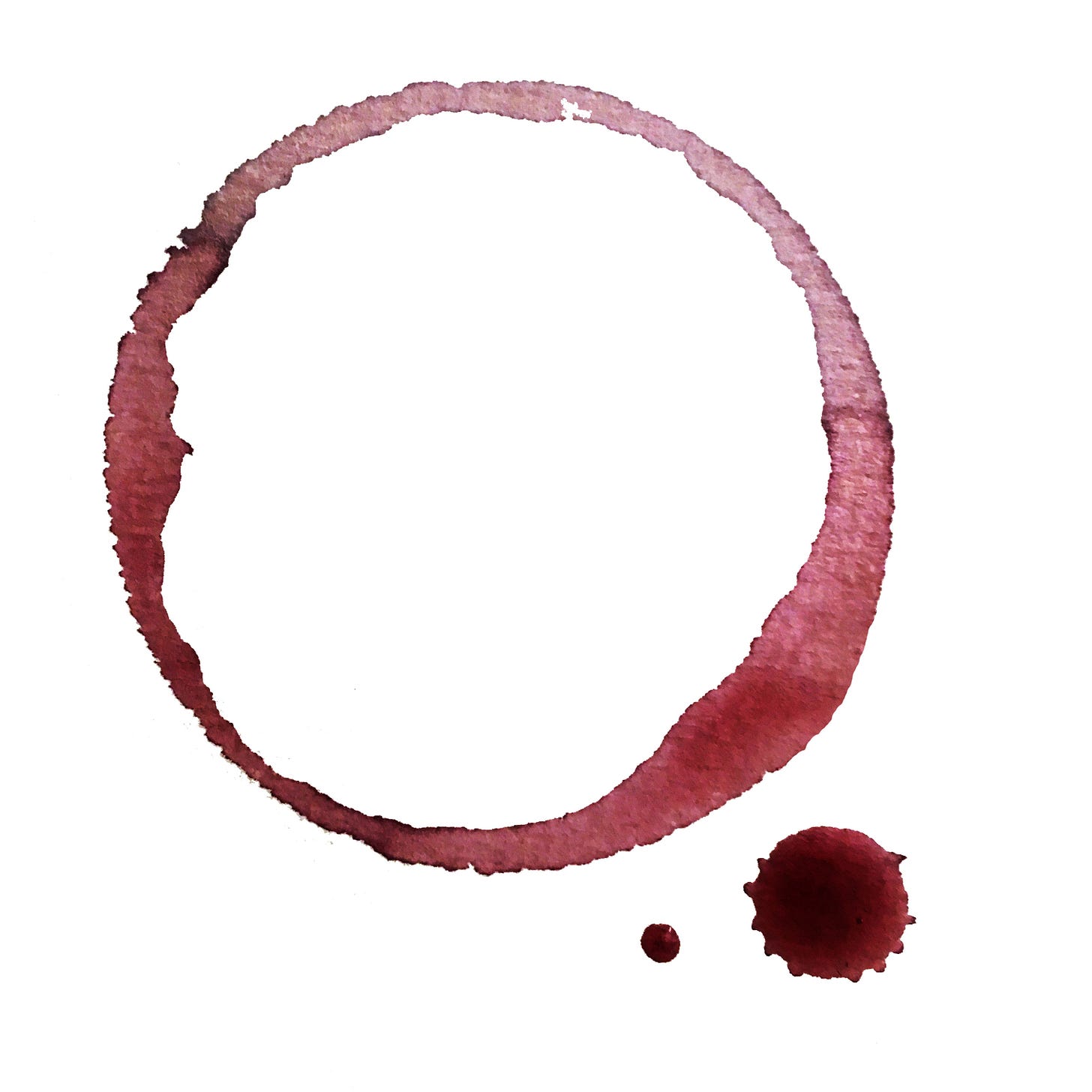Dark August
So much rain, so much life like the swollen sky
of this black August. My sister, the sun,
broods in her yellow room and won't come out.
Everything goes to hell; the mountains fume
like a kettle, rivers overrun; still,
she will not rise and turn off the rain.
…Derek Walcott
There’s a kind of romantic ideal associated with the grape harvest with happy smiley people working harmoniously in the sun, celebrating nature’s bounty and the promise of a new vintage. Anyone who has picked grapes will know that that vision, as true as it might be, is not always the reality. In fact, it rarely is. As I mentioned in last week’s post, the 2024 vintage is far from ideal as persistent rains, frosts, hail, and widespread mildiou and oidium have lowered yields and compromised quality throughout France.
But even a bad harvest produces wine and though there will be less wine in 2024, not all is lost and as harvest begins, there’s still optimism and energy to bring forth the best of whatever nature has provided.
On Monday 23 September, we were invited to pick grapes at the Coteaux de Montguichet, a 7 hectare vineyard that was planted in 2019 in Chelles by Pierric Petit and his wife Maura Pollin, which is 15 kilometres from Paris. In addition to Chardonnay, Pinot Noir, and Pinot Gris, the domain also has a section of Savagnin, the very distinctive white grape of the Jura. It is located in a 100 hectare biodiversity zone owned by the state, surrounded by forest with two other agricultural projects also active on the land.
Grape picking is back-breaking work as one is invariably bent over for prolonged periods, or squatting, or kneeling.
A group of high-school students who are following an agricultural cursus, none of whom had ever picked grapes before, made up the larger part of the picking team. Their interests in agriculture ranged from animal farming and production to ecological issues and a love of nature.
It rained early in the morning and again between 8 and 9am, delaying our departure into the vines. So we lingered over coffee and cake, prior to Pierric and Maura giving us a detailed modus-operandi about procedures and safety. Once out in the vines, the ground was of course damp (or should I say sodden), which meant our shoes collected heavy clods of mud so you felt you were dragging around an extra 20 kilos of weight.
After 3 hours of bending, stooping, snipping, and tearing leaves away to be sure not to miss any grapes, we headed back to the chai for a ‘déjeuner de vignerons’, which included a very fine Chardonnay and rather light, but very pretty Pinot Noir from the property.
The students could only stay for an hour or so after lunch, so a reduced team of about eight of us finished the picking of the Pinot Gris plot, which had been the day’s target.
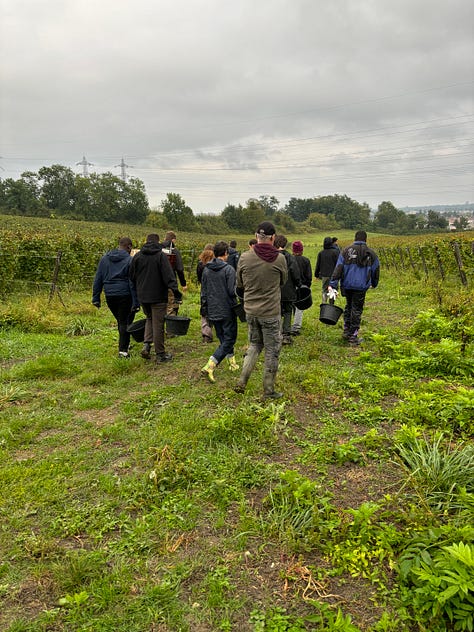
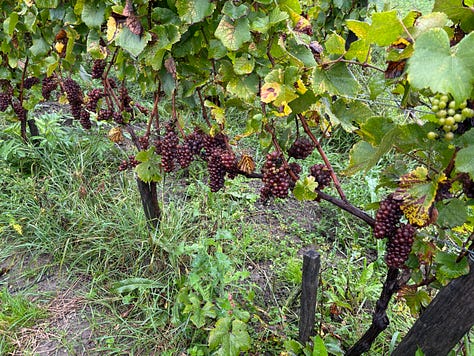
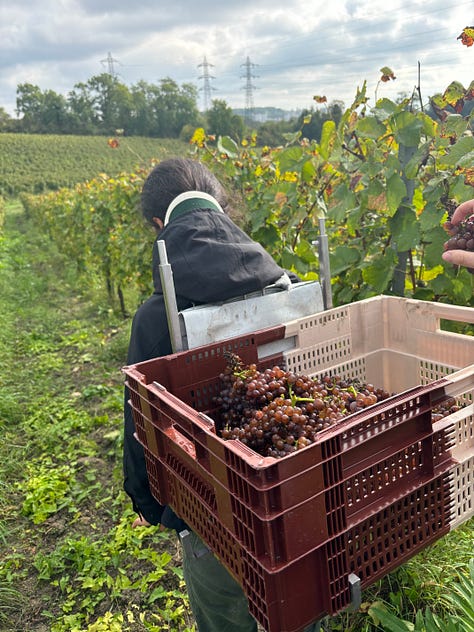
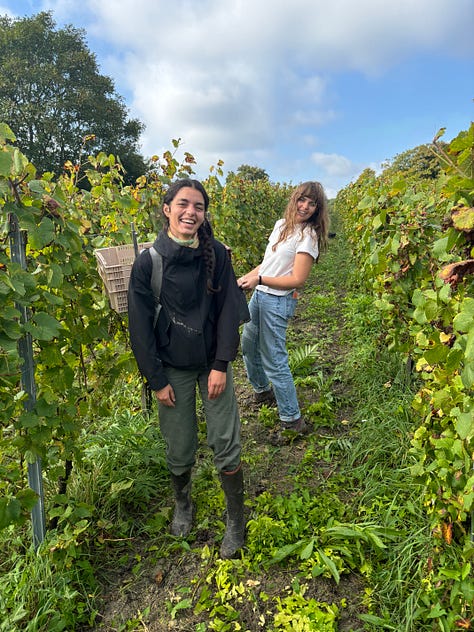
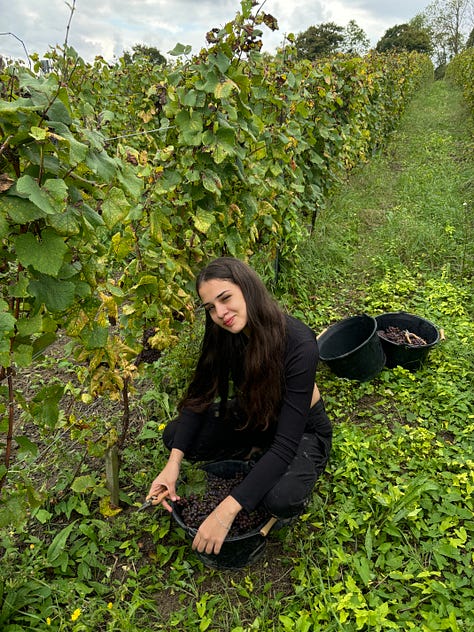
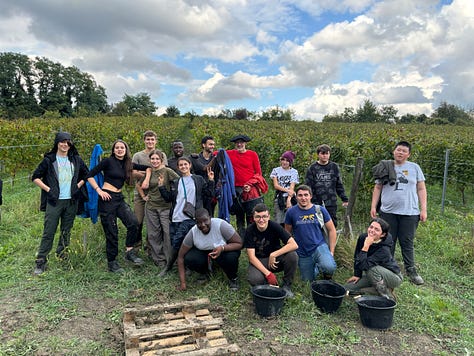
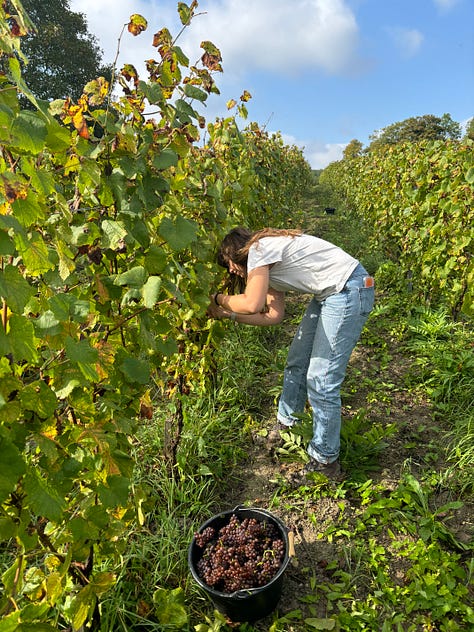
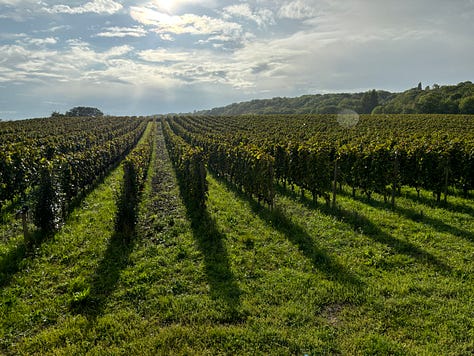
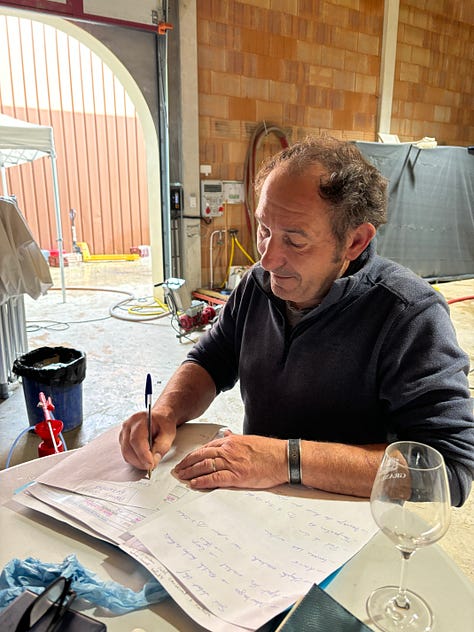
The last hour was a bit of a slog as it rained again and our backs were ready to give out. But we persisted and managed to finish around 5pm. It was an honest day’s work, rewarded at the end with another glass of the domain’s wine, a T-shirt, and a bottle of wine to take home.
In all, we picked around two tonnes of grapes, which were still being pressed when we were ready to leave.
The chai (winery and vat room) was added in 2022 with the first vintage being vinified there that year. In a recent blind tasting hosted by the Revue de Vin de France and Le Parisien (a newspaper), both Pierric’s Chardonnay and his Pinot Noir won first place. Though it wasn’t stated at the time, it was the wines of Montguichet that were liked most in the blind tasting of wines from the Île-de-France I hosted in April, which I wrote about in my post History in the making.
We are at the very beginning of the viticultural renaissance that is taking place in the Île-de-France, and Les Coteaux de Montguichet are very much at the fore. Planting vines is a vast undertaking that is all the more courageous given the unpredictable proclivities of nature and an uncertain future. The Île-de-France as a region has enormous potential having been the largest wine producing region in the world until two centuries ago. Historical precedence, vine perfect soils, and a favourable climate (comparatively) are all plusses in this oenological gamble. What the future holds is yet to be seen. In the meanwhile, there is a special providence in the fall of a bunch of grapes, which pressed and fermented, will become this year’s wine. Santé!
Thank you for letting me into your world and for reading the Paris Wine Walks Substack. Your support is invaluable as are your comments, suggestions, critiques, dreams, thoughts and remembrances. A little encouragement goes a long way, so please consider a paid subscription, which need cost no more than (a cheap) glass of wine per week. Or, book a wine walk!
My book, ‘The Hidden Vineyards of Paris’ (reviewed in Jancis Robinson’s wine blog, the Wine Economist, National Geographic Traveler UK, UK Telegraph) is also available at ‘The Red Wheelbarrow Bookshop’ at 11 rue de Medicis, 75006 Paris. If you haven’t yet discovered this gem of a bookshop, now’s your chance. Open every day!
Wine Walks!
For more information, click on the underlined links:
Sparkling Wine Splash!
Share a sparkling, convivial moment with colleagues, friends or clients to celebrate the moment or to simply gather for fun.
Clos Montmartre - Paris in Your Glass
Paris' most famous wine producing vineyard
Latin Quarter Unbottled!
An insider's journey to the oldest wine neighbourhood in the city
Belleville Unbottled!
A winebar crawl that features some of the best winebars in the city
Wine Your Way Through the Marais
The Marais seen through a wineglass
Saint-Germain-des-Prés
Discover the vinous spirit of medieval Paris
3-Vineyard Cycling Tour
A comprehensive overview of medieval Paris
Paris Bottled!
Short on time? This one’s for you.

